Hunting, protection, and herding are a few of the many reason dogs have been bred for over 20,000 years. While some dogs still provide specialized services, such as police dogs and Seeing Eye dogs, the majority of dogs in American households today are kept as pets and companions. So how do you deepen the bond with your dog and make a great relationship, one that’s lasted thousands of years, even better?
1. Your Dog Needs Consistent Boundaries to Feel Safe
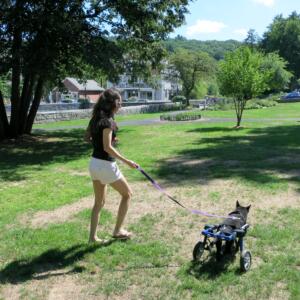 Dogs need consistent boundaries and rules to feel safe. For instance, don’t let your dog sleep in your bed as a special treat one day, and then make him sleep on the floor the next. Inconsistent rules confuse your dog. He won’t know how he’s supposed to behave. This could lead to bad behavior, which will most likely leave you and your pet frustrated.
Dogs need consistent boundaries and rules to feel safe. For instance, don’t let your dog sleep in your bed as a special treat one day, and then make him sleep on the floor the next. Inconsistent rules confuse your dog. He won’t know how he’s supposed to behave. This could lead to bad behavior, which will most likely leave you and your pet frustrated.
Donna Chicone, author, dog advocate, and TEDx speaker, offered this advice in an email conversation:
“Set boundaries and limits for your dog’s safety and success behaviorally. Where he sleeps, where he eats, furniture he can be on or not on. Toys he can play with. Just as any member of your family has a place and belongings that are exclusively theirs, so does your dog, because your dog is a member of your family.
Teaching your dog basic obedience behaviors like: sit, stay, down, come, and heel are the basic behaviors a dog needs to understand what is expected of them behaviorally. They can comply with these requests and feel successful in doing so.
The key to successful training is to also have a well socialized dog. A dog who is socialized to other dogs and people and who has basic obedience behavior is a joy to live with.”
If you’re not sure how to train your dog, find a good obedience course in your area you can take together.
2. Spend Quality Time to Show You Care
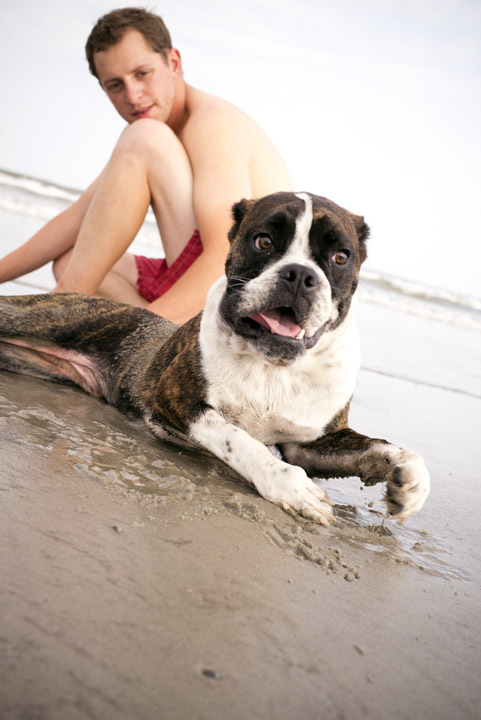 If your dog is anything like mine, she waits patiently for you to get home when you’re away. You’re the highlight of her day.
If your dog is anything like mine, she waits patiently for you to get home when you’re away. You’re the highlight of her day.
Irith Bloom, certified professional dog trainer and a certified dog behavior consultant, says in an email conversation,
“Any activity that your dog enjoys is a good place to start in building a bond with your dog. If your dog is having fun with you, the dog will tend to bond more strongly to you.”
Your dog wants your attention. Play with him to create a stronger bond. Get on the ground and play tug-of-war, fetch, or catch with a favorite toy.
I love to get on my hands and knees to play with my dog. While on your hands and knees, lower your elbows to the floor and rest them there while your butt is still in the air, as if you’re bowing to your dog. This signals that, “Whatever I’m about to do next is all in fun.”
3. Train with Your Dog to Strengthen Your Bond
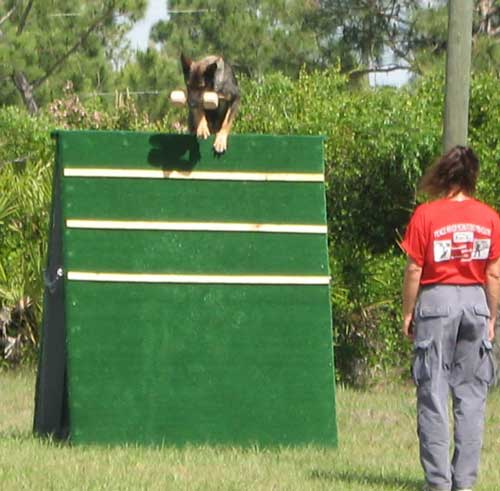 A great way to strengthen the bond between you and your dog is to train with her. Pick something that you can learn together, such as Agility Training, Lure Coursing, Rally, Field Events, and more. You can train for fun or enter competitions. You can even compete in dog obedience!
A great way to strengthen the bond between you and your dog is to train with her. Pick something that you can learn together, such as Agility Training, Lure Coursing, Rally, Field Events, and more. You can train for fun or enter competitions. You can even compete in dog obedience!
Kayla Fratt, dog trainer and adoption counselor, says in an email conversation,
“Training is the best way to build a bond with your dog. Both of you are invested, and if you’re using treats, it’s fun for everyone! You also can impress your friends with your dog’s new skills and teach your dog how to be a better member of society. It’s a win-win-win.”
You’ll strengthen your bond as you learn new skills together. If you’re using treats for training, this will solidify you as the bringer of all things good in your dog’s eyes.
4. Your Dog Needs Affection to Feel Loved
Dogs are sentient beings with many feelings and emotions. Chicone states,
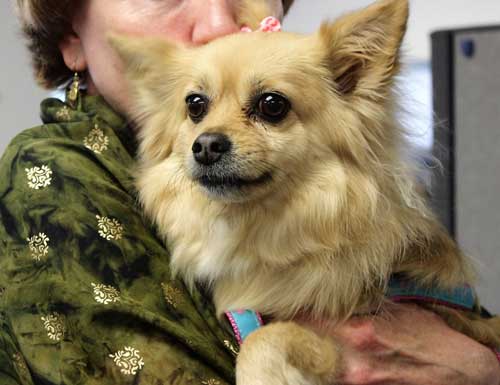 “Dogs are sentient and feel joy, sadness, pain, fear and many more feelings. When they bond with their human they feel joy and happiness and want only to be with their human.
“Dogs are sentient and feel joy, sadness, pain, fear and many more feelings. When they bond with their human they feel joy and happiness and want only to be with their human.
Dogs respond to our feelings. If we are feeling upset or sad, they tune into those feelings.
Dogs especially feel pain, both physical and emotional. When we embrace this, a level of respect falls in place naturally. This respect is built on continuously as you consistently regard the feelings of your dog.”
Just as people need to be touched to feel love, so do our dogs. Most dogs love to have their backs patted, their tummies rubbed, and the back of their ears scratched. Experiment to figure out what types of touch your dog likes best and pet your dog in that way to show them affection.
5. Your Dog’s Brain Needs to Be Stimulated
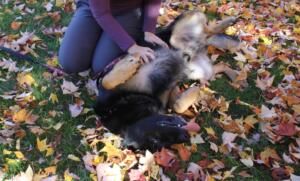 Dogs tend to get bored just like people. They need stimulation to keep their brains sharp. There are many ways to stimulate your dog’s brain, including giving them treat puzzles and food puzzles. Make them work for their food.
Dogs tend to get bored just like people. They need stimulation to keep their brains sharp. There are many ways to stimulate your dog’s brain, including giving them treat puzzles and food puzzles. Make them work for their food.
Bloom says,
“I am a huge fan of getting rid of the food bowl and feeding dogs using food toys. There are a wide variety of products available on the market.
You can also simply scatter your dog’s kibble in a room or in the yard. It’s also possible to make your own food toys by putting food into a plastic jar or bottle (without the lid, after making sure there are no rough edges).”
Hide their favorite treats around the house just before you leave for work, and see how many they were able to sniff out while you were away. When you leave the house, give your dog a Kong filled with their favorite treats, such as peanut butter or cream cheese.
“Whether you just scatter kibble or use some kind of food or puzzle toy, the idea is to harness your dog’s hunting instincts and get him to work for his food, rather than receiving the food for free,” says Bloom.
6. Learn About What Your Dog Doesn’t Like
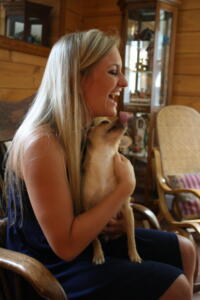 Just like people, dogs have likes and dislikes. Most dogs don’t like head pats and hugs. To a dog, hugs are restrictive and raise their stress levels. Most people don’t like someone invading their personal space, so why would a dog? Chicone says,
Just like people, dogs have likes and dislikes. Most dogs don’t like head pats and hugs. To a dog, hugs are restrictive and raise their stress levels. Most people don’t like someone invading their personal space, so why would a dog? Chicone says,
“Listen to your dog. Observe the body language. Your dog is talking to you all the time.”
To strengthen your bond with your dog, don’t do things that he doesn’t like. Avoiding these things shows your dog you respect him and his space. Bloom states,
“To figure out what your dog likes, try gently petting a part of the dog’s body for a few seconds, and then stop and take your hands off the dog. If your dog leans in, paws at you, or nuzzles you, the dog probably liked what you were doing.
The best part is that even if the dog didn’t really enjoy that kind of touch, the fact that you stopped and ‘asked’ the dog if the dog wanted more helps the dog learn you are trustworthy, which strengthens your bond.”
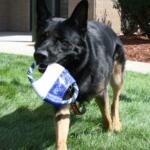
There are exceptions for things that are necessary for their well-being, such as going to the vet, getting a haircut, brushing their teeth, etc. Make sure to reward them with a toy or a treat after each of these unpleasant, but necessary, events.
7. For a Strong Bond, Your Dog Needs to Trust You
Using positive training techniques builds trust and respect between you and your dog. Negative or fear-based techniques are not necessary, and can actually be harmful to your bond with your dog.
Chicone says,
“Using alpha fear-based techniques only promote a fear-based relationship with a dog. Using positive training techniques such as food, praise, and touch will create a dog eager to please you to receive the positive rewards. Building a relationship on trust and respect will develop into a long, loving relationship with your dog.”
Fratt gives an example:
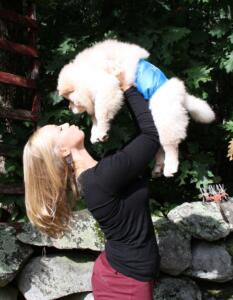 “Imagine that you were sent to the bus station in Cambodia tomorrow. A person who spoke no English started dragging you through the crowd and yelling at you randomly. They didn’t let you leave and yanked on your belt intermittently.
“Imagine that you were sent to the bus station in Cambodia tomorrow. A person who spoke no English started dragging you through the crowd and yelling at you randomly. They didn’t let you leave and yanked on your belt intermittently.
This would be really, really frustrating. This is often how we train our dogs. Instead, imagine that the person gave you a Skittle every time you did what he wanted. You’d be following him around happily pretty quickly.
You also would probably learn how to navigate the Cambodian bus system much more quickly. That’s what we strive for in modern dog training. Think of training in terms of what you want your dog to do, not what you want them not to do.”
What to Do Now to Deepen the Bond with Your Dog
Building a strong bond with your dog takes time and trust. If you feel that you’re not there yet, or would like your relationship to be stronger, pick one of the suggestions above and give it a try.
What do you have to lose?
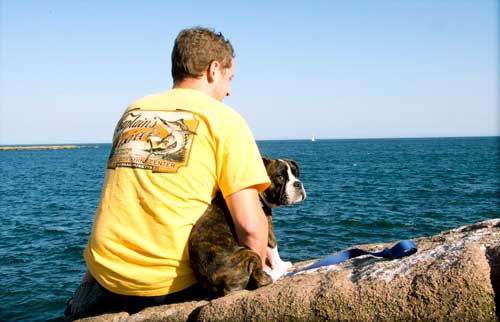
This guest blog post was contributed by Crystal Sykes, a freelance writer for hire with a BA in English. She has always loved dogs, and her Terrier Ella keeps her extremely busy. More of her writing can be found at Simply Playful Fare.

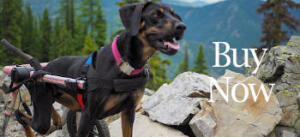
Related Articles
Did we answer all your questions on "Bond with dog"?


 Dogs need consistent boundaries and rules to feel safe. For instance, don’t let your dog sleep in your bed as a special treat one day, and then make him sleep on the floor the next. Inconsistent rules confuse your dog. He won’t know how he’s supposed to behave. This could lead to bad behavior, which will most likely leave you and your pet frustrated.
Dogs need consistent boundaries and rules to feel safe. For instance, don’t let your dog sleep in your bed as a special treat one day, and then make him sleep on the floor the next. Inconsistent rules confuse your dog. He won’t know how he’s supposed to behave. This could lead to bad behavior, which will most likely leave you and your pet frustrated. If your dog is anything like mine, she waits patiently for you to get home when you’re away. You’re the highlight of her day.
If your dog is anything like mine, she waits patiently for you to get home when you’re away. You’re the highlight of her day. A great way to strengthen the bond between you and your dog is to train with her. Pick something that you can learn together, such as
A great way to strengthen the bond between you and your dog is to train with her. Pick something that you can learn together, such as  “Dogs are sentient and feel joy, sadness, pain, fear and many more feelings. When they bond with their human they feel joy and happiness and want only to be with their human.
“Dogs are sentient and feel joy, sadness, pain, fear and many more feelings. When they bond with their human they feel joy and happiness and want only to be with their human. Dogs tend to get bored just like people. They need stimulation to keep their brains sharp. There are many ways to stimulate your dog’s brain, including giving them treat puzzles and food puzzles. Make them work for their food.
Dogs tend to get bored just like people. They need stimulation to keep their brains sharp. There are many ways to stimulate your dog’s brain, including giving them treat puzzles and food puzzles. Make them work for their food. Just like people, dogs have likes and dislikes. Most dogs don’t like head pats and hugs. To a dog, hugs are restrictive and raise their stress levels. Most people don’t like someone invading their personal space, so why would a dog? Chicone says,
Just like people, dogs have likes and dislikes. Most dogs don’t like head pats and hugs. To a dog, hugs are restrictive and raise their stress levels. Most people don’t like someone invading their personal space, so why would a dog? Chicone says,
 “Imagine that you were sent to the bus station in Cambodia tomorrow. A person who spoke no English started dragging you through the crowd and yelling at you randomly. They didn’t let you leave and yanked on your belt intermittently.
“Imagine that you were sent to the bus station in Cambodia tomorrow. A person who spoke no English started dragging you through the crowd and yelling at you randomly. They didn’t let you leave and yanked on your belt intermittently.


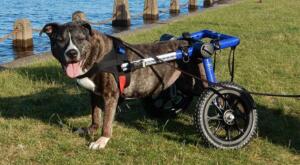
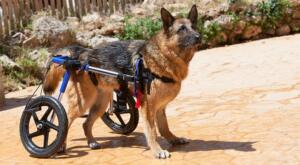
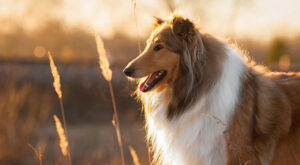
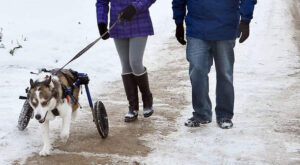
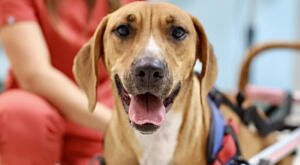
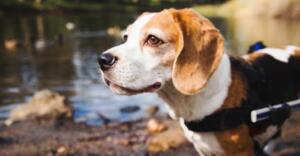
[…] your love, and pet and play whenever your friend allows it. You do have to be patient, however, as bonding will take time, regardless of whether your pet is adopted. They may be full of nerves and anxiety, […]
[…] A dog that trusts you will let you stroke the soft fur behind his ears, and doing this strengthens your bond. And in case you were wondering, your dog does enjoy the attention. Stroking and touching Rover in a way that he enjoys helps him to feel loved, and to love you back. […]
[…] dog than to receive your affection and touch. Dogs need lots of cuddles and petting to feel truly loved and safe, and identifying early signs of increased anxiety and nipping it in the bud with a big cuddle […]